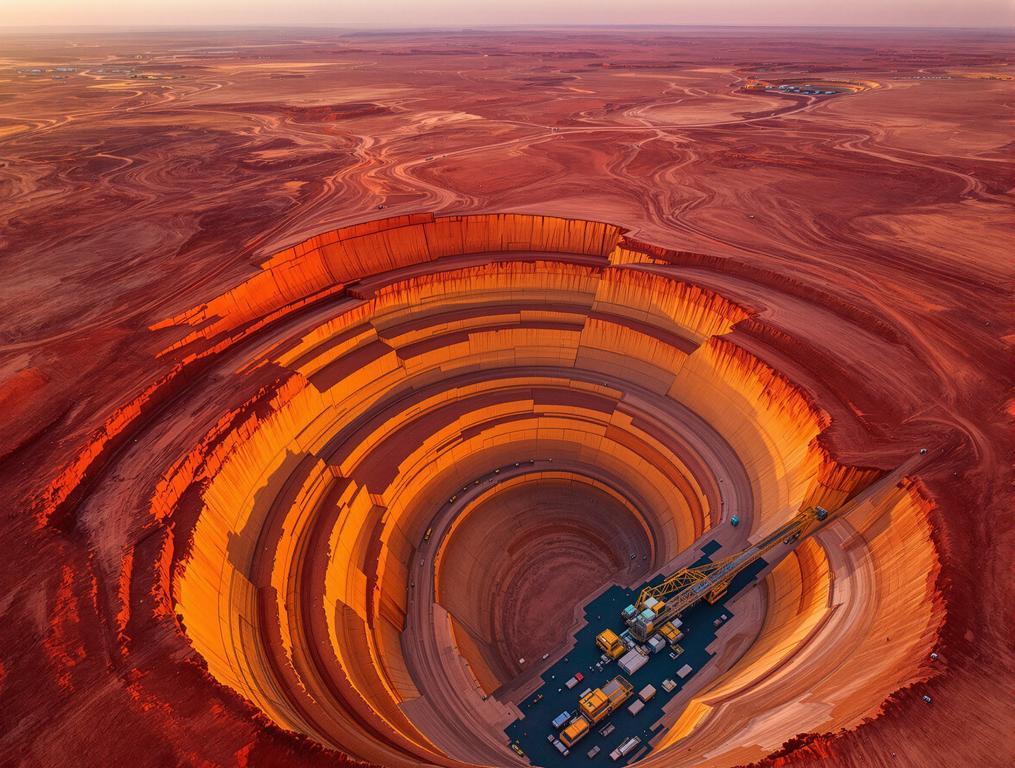I’ve just stepped off a Skippers Aviation flight into Meekatharra, where the vast red earth stretches to every horizon. This feels like Australia’s ultimate hidden frontier. Around me, 1,286 people maintain a region spanning 100,189 square kilometers – an area larger than South Korea with fewer residents than a single apartment building. The town’s name whispers its reality in Yamatji language: “place of little water.” Yet what Meekatharra lacks in crowds and urban comforts, it makes up for with something increasingly rare: authenticity.
The Hidden Gold Legacy That Kalgoorlie Tourists Never See
While Kalgoorlie draws coach tours to its commercialized mining attractions, Meekatharra offers something far more genuine. Here, active gold mines still operate alongside historical sites, creating a living museum where past and present extraction methods exist simultaneously.
Walking the Meeka Rangelands Discovery Trail, I watch the morning light illuminate massive open-cut mines. Unlike sanitized tourist experiences elsewhere, visitors here can witness real mining operations and even try their hand at prospecting – a hands-on gold rush experience that’s become nearly impossible to find elsewhere.
“You won’t find gift shops selling fake gold nuggets here,” a weathered local tells me at the Commercial Hotel. “But bring a pan to the right creek, and you might just find the real thing.”
This authenticity extends beyond mining to a deeper cultural layer. The interpretive signage along the trails weaves together two narratives: the European gold rush history and the Yamatji Indigenous heritage that stretches back thousands of years. This dual storytelling creates a richness that’s missing from more commercialized mining towns like Kalgoorlie.
Where Mining Meets Ancient Culture
Unlike Queensland’s rapid regional development patterns, Meekatharra maintains steady mining operations rather than population growth. The region preserves a delicate balance between resource extraction and cultural preservation that feels increasingly rare in modern Australia.
At the heart of town stands the Meekatharra Museum, housing photographs and artifacts documenting the gold rush alongside beautiful handcrafted quilts donated by local families – each stitch telling stories of isolation and community that defined outback life.
“We don’t separate our mining history from our Indigenous story. They’re stitched together like the quilts in our museum – sometimes beautiful, sometimes painful, but always authentic.”
The museum’s collection reveals how mining and Indigenous heritage have intertwined over generations, creating a cultural depth that rivals destinations with ten times the visitors. While Tasmania’s wildlife tourism model attracts international crowds, Meekatharra offers something more intimate – a chance to understand Australia’s complex relationship with land and resources.
The minimal light pollution rivals Nevada’s remote stargazing destination, making night sky viewing a highlight for photographers. During winter months, the Milky Way arcs dramatically across the sky, creating natural celestial shows that city-dwellers rarely experience.
What the Guidebooks Won’t Tell You
Visit now and you’ll catch the perfect transition between seasons. The Meeka Outback Festival has just wrapped up, meaning accommodations are available again. But more importantly, you’ll arrive just before the wildflower season explodes in July, bringing the iconic red Sturt Desert Pea and dozens of other species into vibrant bloom.
For the best experience, hire a 4WD vehicle in Perth before making the 765km journey north along Great Northern Highway. The drive itself reveals Australia’s dramatic transition from coastal plains to red outback expanses. Alternatively, Skippers Aviation offers direct flights from Perth several times weekly.
Stay at the Commercial Hotel for authentic outback accommodation, or book ahead at the Meekatharra Caravan Park for a more budget-friendly option. This cultural juxtaposition of mining heritage and Indigenous traditions creates surprising cultural contrasts similar to what visitors experience in unexpected places like New Mexico’s tiny astronomy towns.
Beyond the Mines: Wildlife and Natural Wonders
Rise early to spot emus and kangaroos along remote roads, or visit the surrounding bush to glimpse wedge-tailed eagles soaring above. The harsh environment hosts surprising biodiversity, including the distinctive bungarra lizards that locals point out with pride.
As my flight prepares to depart, I take one last look at this improbable place where fewer than 1,300 souls maintain an area larger than entire countries. In an age where authentic experiences feel increasingly manufactured, Meekatharra remains stubbornly, wonderfully real – a place where Australia’s complex identity continues to be written in red earth, gold veins, and ancient stories.
